 |
Anne Seymour Damer
after Angelica Kauffman (c1800) |
Profile
Anne Seymour Damer (8 November 1749 - 28 May 1828) was an English sculptor and author. She was a cousin of Horace Walpole and in his will, he left her a life interest in his Twickenham home,
Strawberry Hill.
Anne Seymour Conway was born on 8 November 1749 at Coombe Bank in Sundridge, near Sevenoaks in Kent. She was the only child of Henry Seymour Conway, a Field Marshal in the British army and Whig MP, and his wife Caroline, daughter of John Campbell, 4th Duke of Argyll, and widow of the 3rd Earl of Ailesbury.
Anne lived with her family at Park Place, Remenham, near Henley-on-Thames. Her father’s secretary, David Hume, encouraged her to develop her skills in sculpture.
%2B'dared'%2Bby%2BHume%2Bin%2BThe%2BQueens%2Bof%2BSociety%2Bby%2BWhartons.jpg) |
Anne Conway (Mrs Damer) 'dared' by Hume
from Queens of Society
by G and P Wharton (1860) |
An unhappy marriage
On 14 June 1767, Anne married the Honourable John Damer, but the marriage was not happy. They separated after seven years and on 15 August 1776, Anne’s husband committed suicide, leaving huge debts behind him.
Horace Walpole
 |
Horace Walpole
from a portrait by John Giles Eccardt (1747-8) |
One of the biggest influences on Anne’s life was Horace Walpole. Walpole was a cousin of her father’s and stood as her guardian during her parents’ frequent trips abroad. Walpole was very fond of Anne and admitted to his friend Horace Mann: “I love her as my own child.”1
He thought very highly of Anne’s artistic and mental abilities, describing her in a letter to the Earl of Strafford as “so eminently a classic genius” and “so superior an artist.”2
On his death in 1797, Walpole made Anne one of his executors and left her a life interest in Strawberry Hill. She lived there until 1811 when she had to give the house up because it was too expensive to maintain.
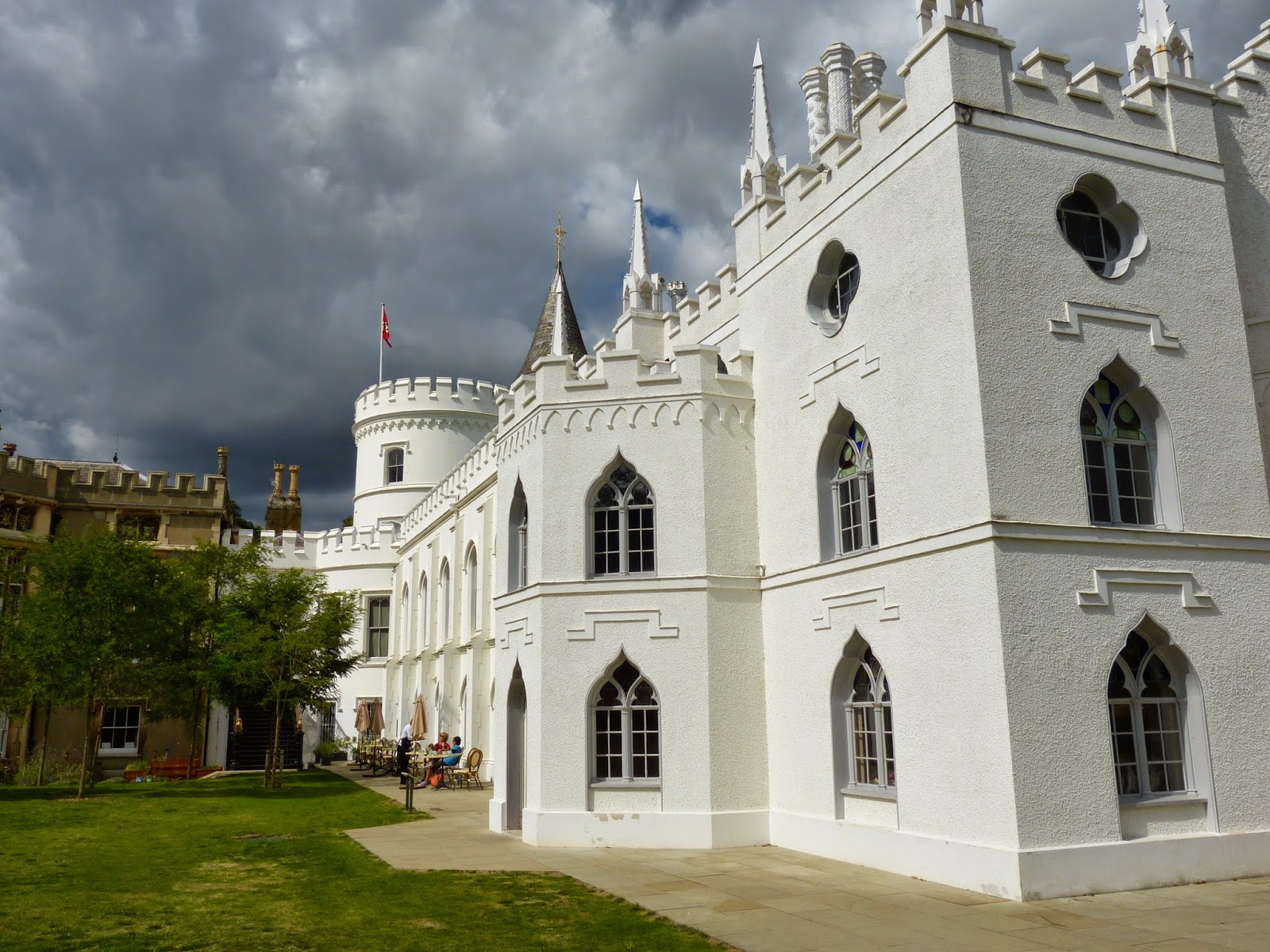 |
Strawberry Hill (2014)
|
Sculptor
Anne was a skilled sculptor and was an honorary exhibitor at the
Royal Academy from 1784 to 1818.
 |
Mrs Damer in the act of having just
finished her head of the Young Paris
by Richard Cosway (1790) |
 |
Portrait bust of Elizabeth Lamb,
Viscountess Melbourne by Anne Damer (1784) |
Walpole wrote:
She has a singular talent for catching the characters of animals. I have two dogs sleeping, by her (which she has since executed in marble for her brother, the Duke of Richmond) that are perfection.3
He also wrote:
Mrs Damer has given me her Eagle, which I call the spoilt child of my antique one, it is in such a passion.
He put the terracotta eagle on display in the library at Strawberry Hill with the words: “Non me Praxiteles finxit, at Anna Damer.” (I was made by Anne Damer not Praxiteles.)4
Anne carved “two colossal heads for the bridge at Henley”
5 in 1785 and a ten foot high statue of Apollo for the new
Drury Lane Theatre which opened in 1794.
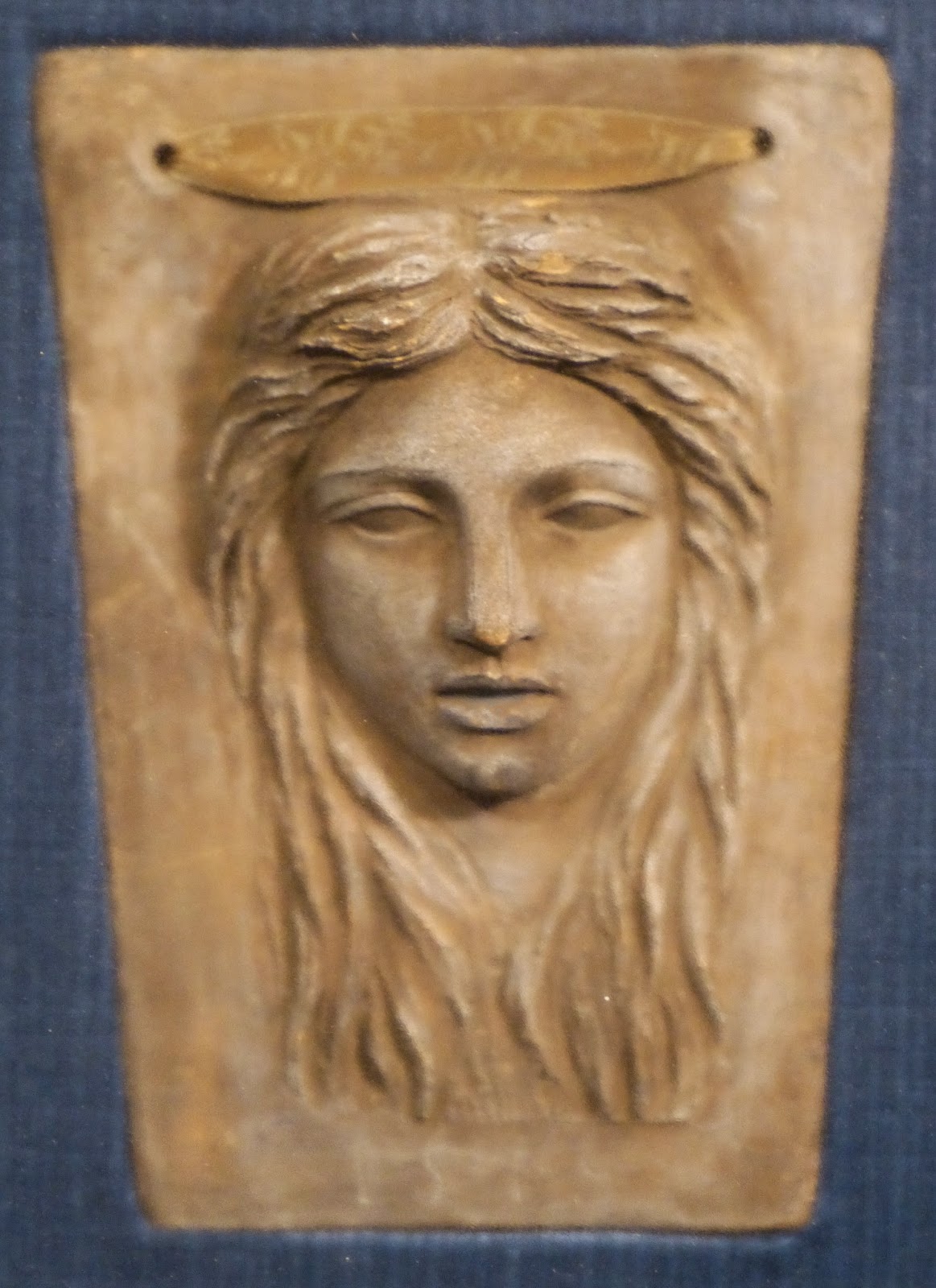 |
Isis, sketch for a keystone
on Henley Bridge by Anne Damer (1784) |
Bluestocking
As well as her artistic achievements, Anne was a classical scholar. Walpole wrote that “she writes Latin like Pliny, and is learning Greek.”1 She wrote a romantic novel, Belmour (1801).
Performer
Walpole described Anne as having “much reserve and modesty”1 but there was another side to her character. She frequently attended masques at the Pantheon and took part in amateur theatricals, both at Richmond House, the London residence of the Duke of Richmond, her half-sister Mary’s husband, and at Strawberry Hill.
Supporter of Fox and the Whigs
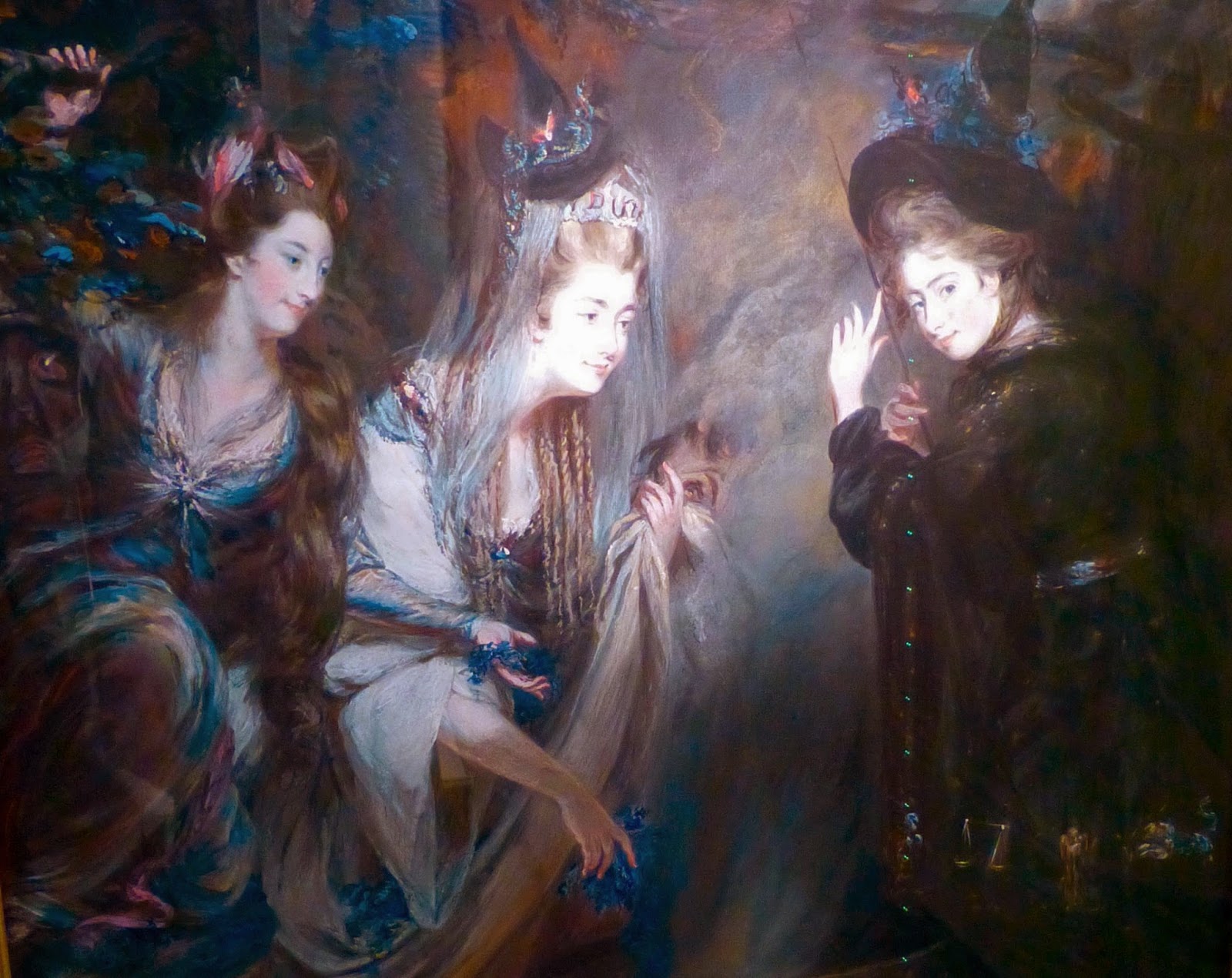 |
From The Three Witches from Macbeth by Daniel Gardner (1775)
Elizabeth Lamb, Viscountess Melbourne
Georgiana Cavendish, Duchess of Devonshire
Anne Seymour Damer
© National Portrait Gallery Photo © RegencyHistory.net
|
Supporter of Princess Caroline
Anne was a personal friend and loyal supporter of
Caroline, Princess of Wales. The Princess visited Anne at Strawberry Hill and is said to have received sculpture lessons from her.
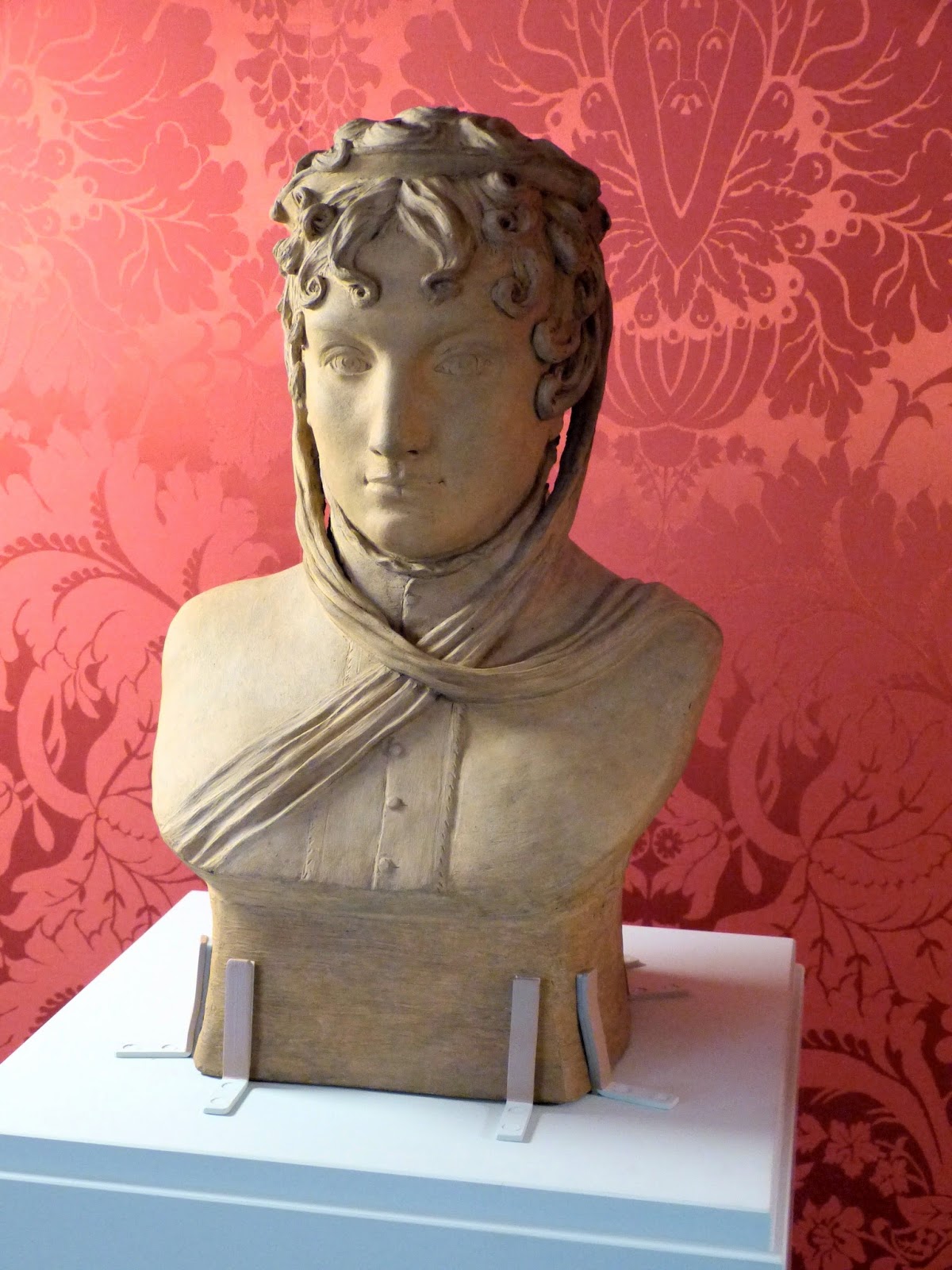 |
Portrait bust of Princess Caroline
of Wales by Anne Damer (1814) |
Female friends
Anne had a number of close female friends, including Princess Daschow; poet and dramatist Joanna Baillie; actresses Elisabeth Farren and Sarah Siddons; and most especially, the author Mary Berry.
Her close friendships with other women caused some unfavourable publicity, in particular, the anonymous pamphlet A Sapphick Epistle from Jack Cavendish to the Honourable and Most Beautiful, Mrs D- which was published around 1770.
 |
Portrait bust of Mary Berry
by Anne Damer (1793) |
Traveller
Anne was “very delicate”3 and often visited the continent where the warmer climate was beneficial to her health. During a voyage in 1779 she was captured by privateers but fortunately she was restored to her father on Jersey.
She visited Sir Horace Mann in Florence and Sir William Hamilton in Naples. In 1798, she met
Admiral Nelson whilst in Naples.
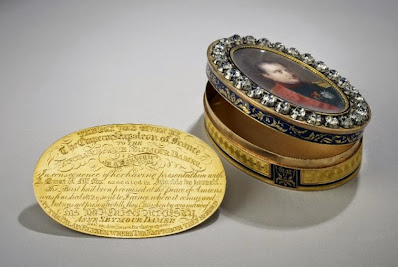 |
The snuffbox given to Mrs Damer by Napoleon in 1815
© British Museum |
In 1802, Anne visited Paris with Mary Berry and was granted an audience with Napoleon.
Anne gave Napoleon plaster busts of Admiral Nelson and Charles James Fox, and promised him a marble version of the bust of Fox.
Anne was given a gold snuffbox, set with a miniature of Napoleon and decorated with 28 diamonds in silver settings. The snuffbox was bequeathed to the British Museum by Anne in 1828.
According to the inscription, the box was
... presented by Napoleon on 1st May 1815 to the Hon. Anne Seymour Damer, sculptress, on receiving from her a bust of Charles James Fox, promised to him at the time of the Treaty of Amiens in 1802.6
Death
Anne died on 28 May 1828 in her house in Grosvenor Square, London. She was buried next to her mother in Sundridge, Kent, with her sculptor’s tools and apron and the ashes of her favourite dog. At her request, her private papers were destroyed after her death.
Rachel Knowles writes clean/Christian Regency era romance and historical non-fiction. She has been sharing her research on this blog since 2011. Rachel lives in the beautiful Georgian seaside town of Weymouth, Dorset, on the south coast of England, with her husband, Andrew.
Find out more about Rachel's books and sign up for her newsletter here.
If you have enjoyed this blog and want to encourage me and help me to keep making my research freely available, please buy me a virtual cup of coffee by clicking the button below.
Notes
(1) In a letter from Horace Walpole to Sir Horace Mann, 7 Sept 1781, from The Letters of Horace Walpole (1857) Vol VIII.
(2) In a letter from Horace Walpole to the Earl of Strafford, 31 Aug 1781, from The Letters of Horace Walpole (1857) Vol VIII.
(3) In a letter from Horace Walpole to Sir Horace Mann, 7 May 1785, from The Letters of Horace Walpole (1857) Vol VIII.
(4) In a letter from Horace Walpole to the Countess of Ossory, 14 June 1787, from The Letters of Horace Walpole (1859) Vol IX.
(5) In a letter from Horace Walpole to Sir Horace Mann, 30 Oct 1785, from The Letters of Horace Walpole (1859) Vol IX.
(6) In her entry in the Oxford Dictionary of National Biography, Yarrington suggests that the box was received as a memento in 1802, but the inscription from the British Museum website stated that it was not received until 1815.
Sources used include:
Walpole, Horace, The Letters of Horace Walpole, edited by P Cunningham, in eight volumes (1857)
Walpole, Horace, The Letters of Horace Walpole, edited by P Cunningham, in nine volumes (1859)
Walpole, Horace, The Works of Horatio Walpole, Earl of Orford, in 5 volumes (1798)
Wharton, Grace and Philip, The Queens of Society (1860)
Yarrington, Alison, Damer, Anne Seymour (1749-1828), Oxford Dictionary of National Biography (Oxford University Press, 2004; online edn Jan 2008, accessed 27 Aug 2014)
British History online
British Museum website
All photographs © RegencyHistory.net unless otherwise stated.

%2B'dared'%2Bby%2BHume%2Bin%2BThe%2BQueens%2Bof%2BSociety%2Bby%2BWhartons.jpg)











Have you seen this: Jonathan David Gross, The Life of Anne Damer: Portrait of a Regency Artist, Lanham MD: Lexington Books, 2014
ReplyDeleteThanks for the reference, Anne.
DeleteI was struck by the brief mention of Anne Damer, sculptor, in your post about Strawberry Hill, so I'm very glad you decided to write about her! I love to learn about accomplished ladies, whether professional or amateur.
ReplyDeleteI'm glad you enjoyed the post. I think there is no doubt that Anne Damer was a very accomplished woman!
DeleteMrs Damer was not only presented to Nelson at Naples but helped Emma Hamilton make all the arrangements!
ReplyDeleteHallo. ou will learn a lot more about Anne Damer and her circle in this new book.
ReplyDeleteElizabeth Craven: Writer, Feminist and European by Julia Gasper
published by Vernon Press.
https://vernonpress.com/title?id=334
There is a detailed discussion of her novel Belmour.
You will learn a lot more about Anne Damer and her circle in this book
ReplyDeleteElizabeth Craven: Writer, Feminist and European by Julia Gasper
published by Vernon Press.
https://vernonpress.com/title?id=334
Elizabeth Craven was one of Anne Damer's closest friends.